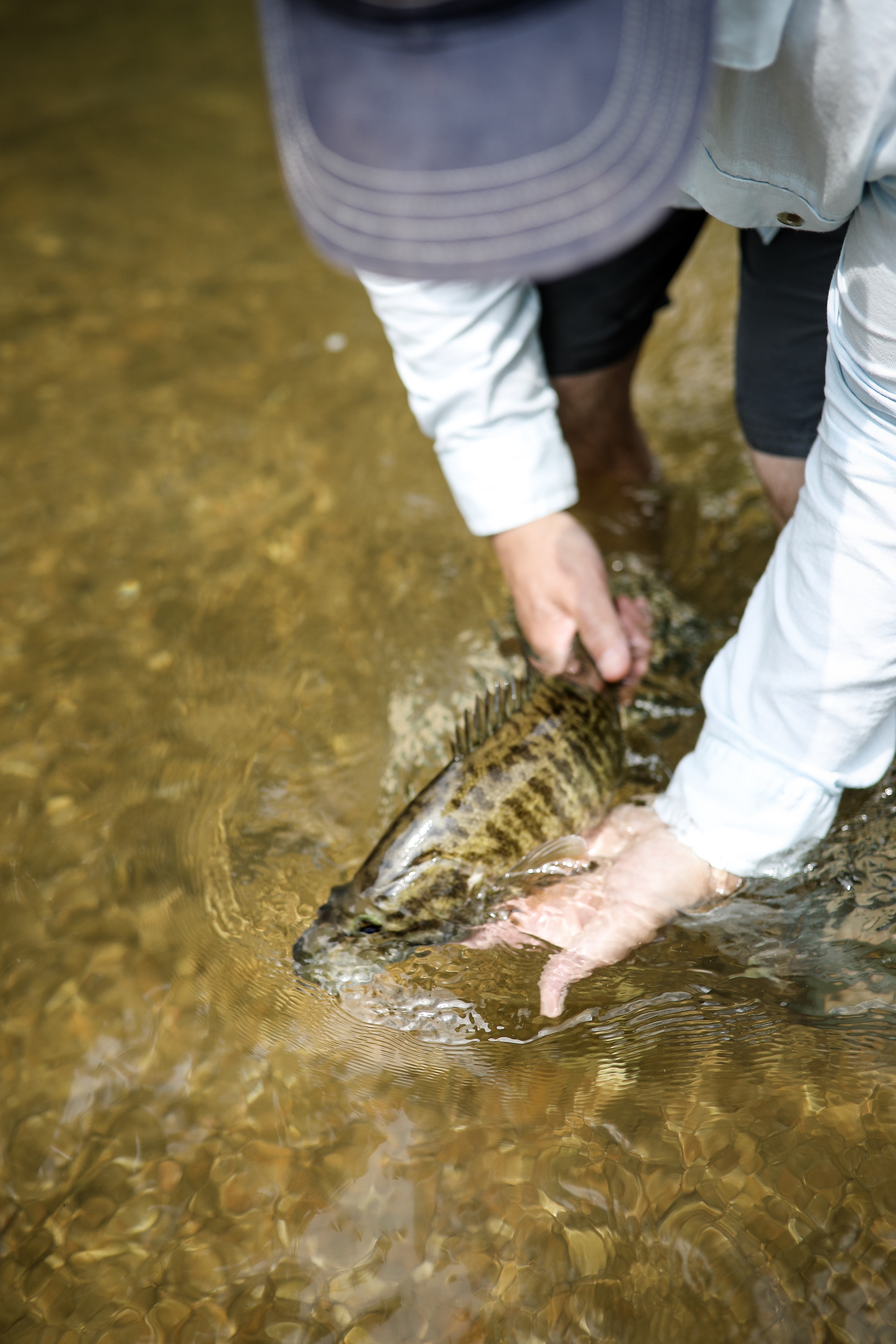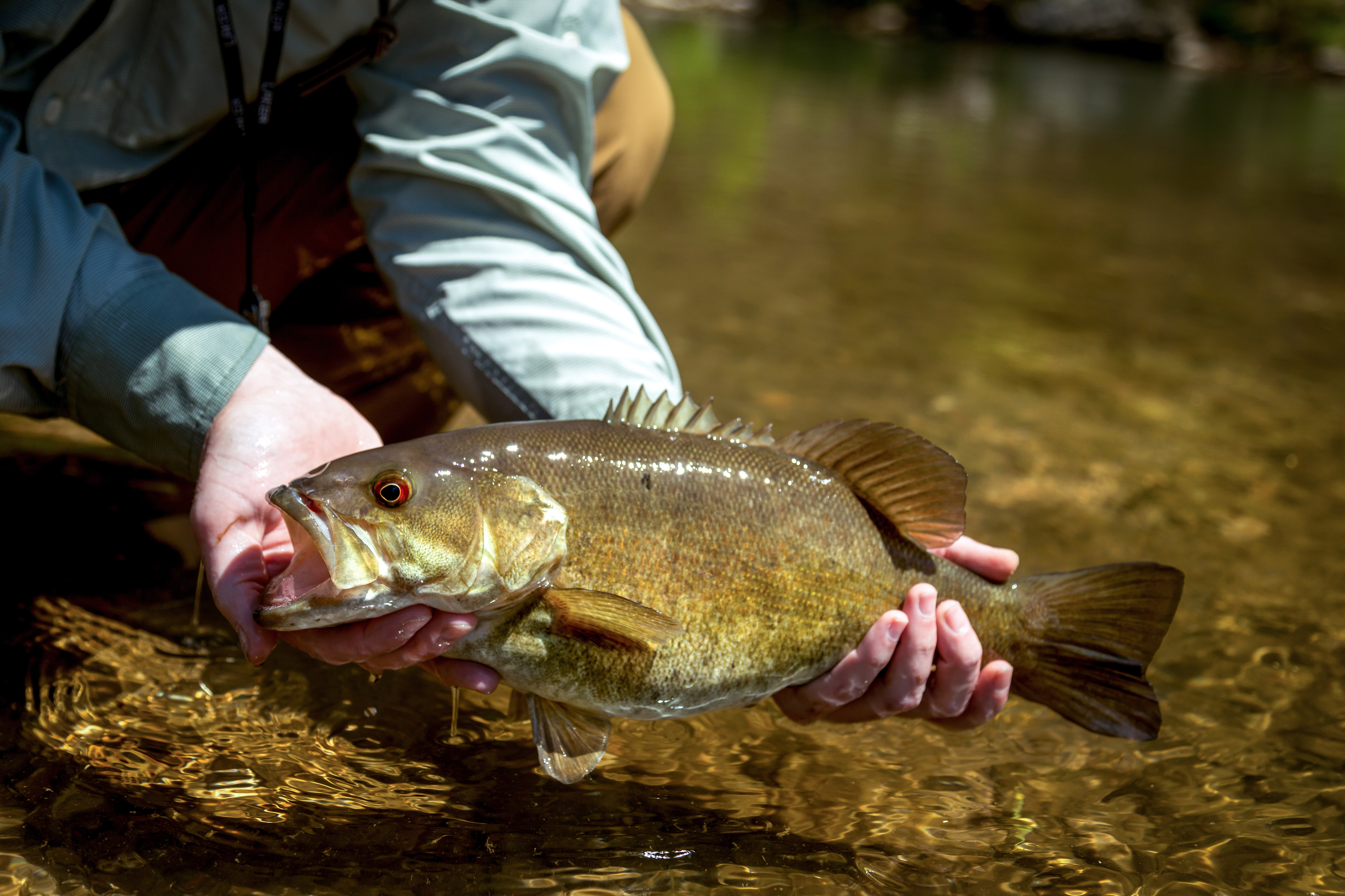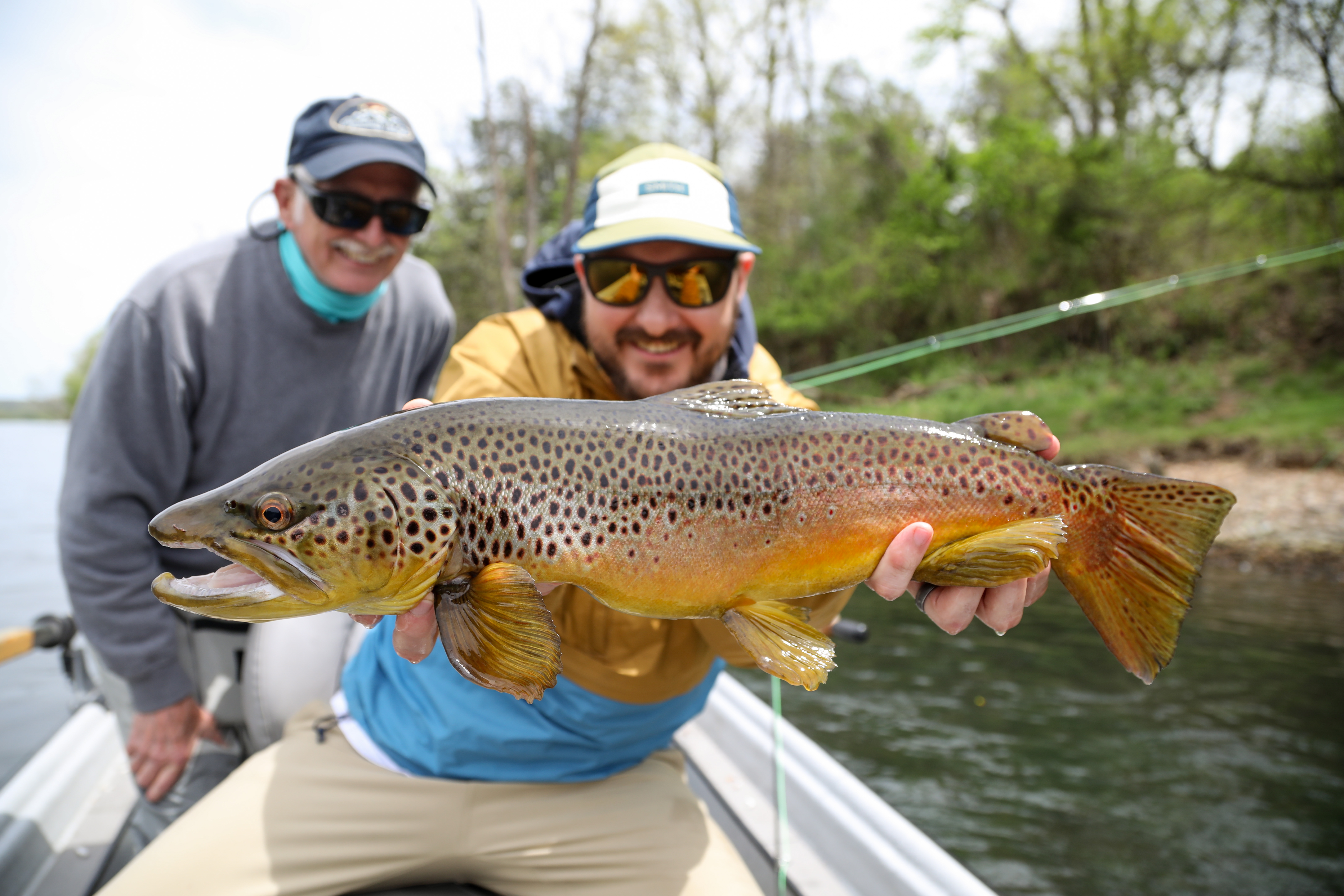When the Ozark summer hits full stride and water levels drop, most anglers either give up or shift their focus. But for Duane Hada and Tadd Fore—two of the most respected smallmouth fly fishing guides in Arkansas—this is the time to hunt.
In Episode 173 of The Ozark Podcast, host Kyle Veit and friend of the show, Bear Newcomb sat down with Duane and Tadd to discuss how to catch trophy smallmouth bass in shallow water during the heat of summer. The insights they shared are a masterclass for anyone looking to elevate their fly fishing game on Ozark streams like Crooked Creek, the Buffalo River, and others.
Why Summer Is Prime Time for Smallmouth Hunting
Many anglers assume that summer’s low water and hot temperatures push fish into hiding or make them less catchable. Duane Hada sees it differently.
“I actually prefer it,” Hada said. “A lot of people are fair weather fishermen, so you can be on the creek and have it pretty much to yourself... Your minnow populations are now congregated en masse... the bass aren’t roaming as much.”
According to Hada and Fore, summer conditions concentrate baitfish and smallmouth into predictable zones—making it less of a fishing game and more of a hunting strategy. “That’s the hiding place. That’s home base right there,” Hada said, describing root balls, submerged logs, and shaded boulders as summer sanctuaries for mature fish.
The Spot-and-Stalk Method
“This is like spot-and-stalk mule deer hunting,” Tadd Fore explained. “You’re walking a lot, you’re picking out that one [fish] and going for that one... and then move on to the next one.”
Instead of blind casting all day, summer fishing on Ozark creeks is about slow, deliberate observation. Fore and Hada often climb up high banks with polarized glasses to scan for fish, then coach clients into position to make a single, perfect cast.
“You want to target him... You’re gonna go one-on-one just like it is hunting,” said Hada. “That’s your target fish... That big 19-incher you want to catch.”
Water Temperature and Fish Behavior
As spring shifts into summer, smallmouth bass migrate out of their deeper wintering holes into oxygen-rich shoals and riffles.
“You’ll see that transition happen where they’ll move into these highly oxygenated shallow riffles chasing minnows,” Fore said. “They’re in that real fast water a lot.”
These ambush zones—especially where fast water meets calm eddies around boulders or submerged vegetation—become magnets for baitfish and, in turn, trophy smallmouth.
“They’ll push a wad [of minnows] right up against [structures] and set back,” Hada said. “And then all of a sudden it’s like, okay, 1, 2, 3, go—and all the smallmouth just blast into ’em.”
The Importance of Stealth and Presentation
Both Hada and Fore stressed that in low-clear water, sloppy wading and rushed casting will blow your shot at a big fish.
“Take your time to see a fish... don’t go trampling through the water and busting everything,” Fore said. “Train your eye to see a smallmouth. A lot of times, especially high sun, they’re gonna be near the banks under boulders or around a boulder where they can get underneath should danger appear.”
When it's time to cast, precision matters. “If I see a cruising smallmouth... I’m casting to where I know he’s headed... then I activate the fly,” Hada explained. “Big wise ones will trail it, waiting for you to mess up.”
How Important Is the First Cast?
“None of ’em [casts] as good as that first one,” said Hada. “Especially on a stream that gets a lot of pressure like Crooked Creek... In the old days, I could cast at the fish, hit him on the back, he’d turn and come to it. I do that now, he leaves a smoke trail for the next county.”
Hada described letting a crawdad fly sit untouched for a minute or more before twitching it into the strike zone, allowing the fish to approach naturally. “The slow retrieves are much more important in the summer... the fly just sits on the bottom and that’s all it took.”
Three Flies Every Ozark Angler Needs
When asked to name just three flies for summer smallmouth in the Ozarks, Hada didn’t hesitate:
- The Creek Crawler (Crawdad Imitation)
- “You need a good crawdad fly, whether it’s mine or a lead-eye wooly bugger with rubber legs... something that’s bottom-scratching in crawdad colors and life.”
- Craft Fur Clouser Minnow
- “In Clearwater situations... the one tied with translucent materials like EP fibers or craft fur... Just a few strands, teardrop shape, looks like a minnow.”
- White Rubber-Legged Popper
- “All minnow bellies are white, so they’re seeing that. A white popper with rubber legs will outfish one without all day long.”
Tadd Fore agreed and added a key point: “Most people’s largest smallmouth they’ve ever caught was on a white popper at one o’clock in the afternoon with the brightest day.”
Float or Wade? Choose Wisely
While summer floats are still possible, both guides emphasized the advantages of wet wading.
“As that water drops and that gravel becomes dry, it’s best fished on foot,” said Fore. “You’re floating over all the fish otherwise.”
Hada added, “It’s a little more work and maybe your canoe drags on every shoal and everything, but it’s worth the effort... I like that low water summer.”
Final Thoughts: Why This Style of Fishing Matters
Summer smallmouth fishing in the Ozarks isn’t for everyone. It requires patience, effort, and an appreciation for nuance.
“You're not gonna go out there and just catch a bunch of them,” Hada said. “You're gonna catch every one of them on purpose.”
Whether you’re wading alone on a forgotten shoal or guiding a friend into the perfect cast, this style of fishing brings you closer to the rhythms of Ozark rivers—and the fish that call them home.
Listen to the full episode of Episode 173 of The Ozark Podcast to hear even more stories, techniques, and smallmouth fly fishing wisdom from Duane Hada and Tadd Fore.








